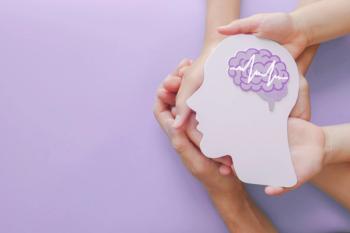
- Vol 34 No 9
- Volume 34
- Issue 9
“The Internet Made Me Do It”-Social Media and Potential for Violence in Adolescents
The Slenderman case revives a long-standing debate: does media exposure influence acts of violence in youth?
DIGITAL PSYCHIATRY
In June 2014, numerous news outlets told the
Following this horrific crime, the typical questions of how and why were asked, but soon came another question: Was the internet, in fact, an accomplice? Had their online activity led to a blurring of fiction and reality in such a way that had allowed them to commit attempted murder?1
This case revives a long-standing debate: Does media exposure influence acts of violence in youth? Recently, the American Psychological Association Task Force re-reviewed the existence of a potential link between violent video game exposure and acts of real-life violence.2 The authors examined the literature from 2009 to 2013 and concluded:
Consistent with the literature that we reviewed, we found that violent video game exposure was associated with: an increased composite aggression score; increased aggressive behavior; increased aggressive cognitions. . . . Our task force concluded that violent video game use is a risk factor for adverse outcomes, but found insufficient studies to examine any potential link between violent video game use and delinquency or criminal behavior.2
Video games are only a small part of the wide expanse of media readily accessible to youths throughout the day. While teenagers engage in an average of over 6 and a half hours of screen time daily (including social media and online videos), the
The evidence
There is limited research to indicate that an increased number of hours on social media correlates directly with aggressive behavior, but there is literature that connects certain types of internet use to increased aggressive behavior. For example, quality of online exposure may be contributory; youths who perpetrated serious crimes were significantly more likely to have viewed violent online content.4 Moreover, similar to the way media coverage of suicide can act as a contagion for “copycat” suicides,5 there is also evidence that some mass killings
Teens that spend hours “liking” their friends’ pictures on social networking sites may be significantly more likely to have other traits associated with violent behavior.
Quantity of internet use may also be contributory.
Teenagers who spend hours “liking” their friends’ pictures on social networking sites may be significantly more likely to have other traits associated with violent behavior aside from their internet habits. The goal of a large body of research has been to characterize the population of adolescents with PIU and to examine comorbidities. Alcohol use and depressive symptoms both predict violent behavior in adolescents,13 and these factors have also been positively correlated with internet use. Perhaps unsurprising given
While more contentious, there is growing evidence that pathologic internet use may positively correlate with depressive disorders,12,19-21 and even “normal” everyday Facebook scrolling may have long-term consequences. Recent longitudinal studies have found that Facebook use is predictive of a decline in subjective well-being,22,23 and similar associations have been delineated between depressed mood and overall social network use, as well as with online chatting.24,25
In addition, while PIU can be conceptualized as an addiction, it has also been characterized as an impulse control disorder. Several studies suggest a
Implications for psychiatrists
Does excessive Twitter time or continual scanning of Facebook feeds cause adolescent violence? It may be more clinically helpful for us to reframe the question: Are youths with risk factors predictive of assaultive behavior such as substance use, impulsivity, and mood disorders also more likely to spend excessive time online? The answer, from the preliminary studies above, appears to be yes. It would be near impossible-and unrealistic-to suggest abstinence from internet-based activities in these adolescents, but future studies may benefit from continued exploration of the ways in which adolescents utilize social media and online forums to enact aggression (eg, cyberbullying) as well as incorporation of internet habits within our routine psychiatric evaluation.
Consider asking the following questions within the traditional assessment of an adolescent. If the answer is yes, this should prompt further exploration.
1) Have you ever viewed real-life violent content online?
2) Have you ever cyberbullied or harassed anyone else online?
3) Have you ever gotten into trouble or an argument because you were online too much?
4) Have you ever experienced tension or anxiety that can only be relieved by going online?
This article was originally posted on 7/10/17 and has since been updated.
References:
1. Jones A. The girls who tried to kill for Slenderman. Newsweek. August 13, 2014.
2. Calvert SL, Appelbaum M, Dodge KA, et al. The American Psychological Association Task Force Assessment of violent video games: Science in the service of public interest. Am Psychol. 2017;72:126-143.
3 . Rideout V. The Common Sense Census: Media use by tweens and teens. Common Sense Media.
4. Ybarra ML, Diener-West M, Markow D, et al. Linkages between internet and other media violence with seriously violent behavior by youth. Pediatrics. 2008;122:929-937.
5. O’Carroll PW, Potter LB. Suicide contagion and the reporting of suicide: recommendations from a national workshop. United States Department of Health and Human Services. MMWR Recomm Rep. 1994; 43(RR-6):9-17.
6. Towers S, Gomez-Lievano A, Khan M, et al. Contagion in mass killings and school shootings. PLoS One. 2015;10. doi:10.1371/journal.pone.0117259.
7. Hahn C, Kim DJ. Is there a shared neurobiology between aggression and internet addiction disorder? J Behav Addict. 2014;3:12-20.
8. Shapira NA, Goldsmith TD, Keck PE, et al. Psychiatric features of individuals with problematic internet use. J Affect Disord. 2000;57:267-272.
9. Kim K. Association between internet overuse and aggression in Korean adolescents. Pediatr Int. 2013;55:703-709.
10. Lim JA, Gwak AR, Park SM, et al. Are adolescents with internet addiction prone to aggressive behavior? The mediating effect of clinical comorbidities on the predictability of aggression in adolescents with internet addiction. Cyberpsychology Behav Soc Netw. 2015;18:260-267.
11. Ko CH, Yen JY, Liu SC, et al. The associations between aggressive behaviors and internet addiction and online activities in adolescents. J Adolesc Heal. 2009;44:598-605.
12. Liu TC, Desai RA, Krishnan-Sarin S, et al. Problematic Internet use and health in adolescents: data from a high school survey in Connecticut. J Clin Psychiatry. 2011;72:836-45.
13. Blitstein JL, Murray DM, Lytle L, et al. Predictors of violent behavior in an early adolescent cohort: similarities and differences across genders. Heal Educ Behav. 2005;32:175-194.
14. Zhou Y, Lin F, Du Y, et al. Gray matter abnormalities in internet addiction: a voxel-based morphometry study. Eur J Radiol. 2011;79:92-95.
15. Yuan K, Qin W, Wang G, et al. Microstructure abnormalities in adolescents with internet addiction disorder. PLoS One. 2011;6:e20708.
16. Altbäcker A, Plózer E, Darnai G, et al. Problematic internet use is associated with structural alterations in the brain reward system in females. Brain Imaging Behav. 2016;10:953-959.
17. Morioka H, Itani O, Osaki Y, et al. The association between alcohol use and problematic internet use: a large-scale nationwide cross-sectional study of adolescents in Japan. J Epidemiol. 2017;27:107-111.
18. Lee BH, Lee HK. Longitudinal study shows that addictive internet use during adolescence was associated with heavy drinking and smoking cigarettes in early adulthood. Acta Paediatr Int J Paediatr. 2017;106:497-502.
19. Younes F, Halawi G, Jabbour H, et al. Internet addiction and relationships with insomnia, anxiety, depression, stress and self-esteem in university students: a cross-sectional designed study. PLoS One. 2016;11:e0161126.
20. Jang KS, Hwang SY, Choi JY. Internet addiction and psychiatric symptoms among Korean adolescents. J Sch Health. 2008;78:165-171.
21. Yen JY, Ko CH, Yen CF, et al. The comorbid psychiatric symptoms of Internet addiction: attention deficit and hyperactivity disorder (ADHD), depression, social phobia, and hostility. J Adolesc Health. 2007;41:93-98.
22. Kross E, Verduyn P, Demiralp E, et al. Facebook use predicts declines in subjective well-being in young adults. PLoS One. 2013;8:1-6.
23. Shakya HB, Christakis NA. Association of Facebook use with compromised well-being: a longitudinal study. Am J Epidemiol. 2017;185:203-211.
24. van den Eijnden RJJM, Meerkerk GJ, Vermulst AA, et al. Online communication, compulsive internet use, and psychosocial well-being among adolescents: a longitudinal study. Dev Psychol. 2008;44:655-665.
25. Pantic I, Damjanovic A, Todorovic J, et al. Association between online social networking and depression in high school students: behavioral physiology viewpoint. Psychiatr Danub. 2012;24:90-93.
26. Ioannidis K, Chamberlain SR, Treder MS, et al. Problematic internet use (PIU): associations with the impulsive-compulsive spectrum. An application of machine learning in psychiatry. J Psychiatr Res. 2016;83:94-102.
Articles in this issue
about 8 years ago
Financial Incentives for Adherence: Do They Pay?about 8 years ago
Partnering With Primary Care Clinicians to Improve Adherenceabout 8 years ago
Psychotherapeutic Strategies to Enhance Medication Adherenceabout 8 years ago
ECT for Catatonia and Melancholia: No Need for Ambivalenceabout 8 years ago
The Quiz: Diabetic Peripheral Neuropathic Painabout 8 years ago
Hemingway’s Chronic Traumatic Encephalopathyabout 8 years ago
A Horse Walks Into a Bar by David Grossmanabout 8 years ago
I Feel Your Pain, Actually, Really?about 8 years ago
Hoarding Throughout the Life SpanNewsletter
Receive trusted psychiatric news, expert analysis, and clinical insights — subscribe today to support your practice and your patients.













